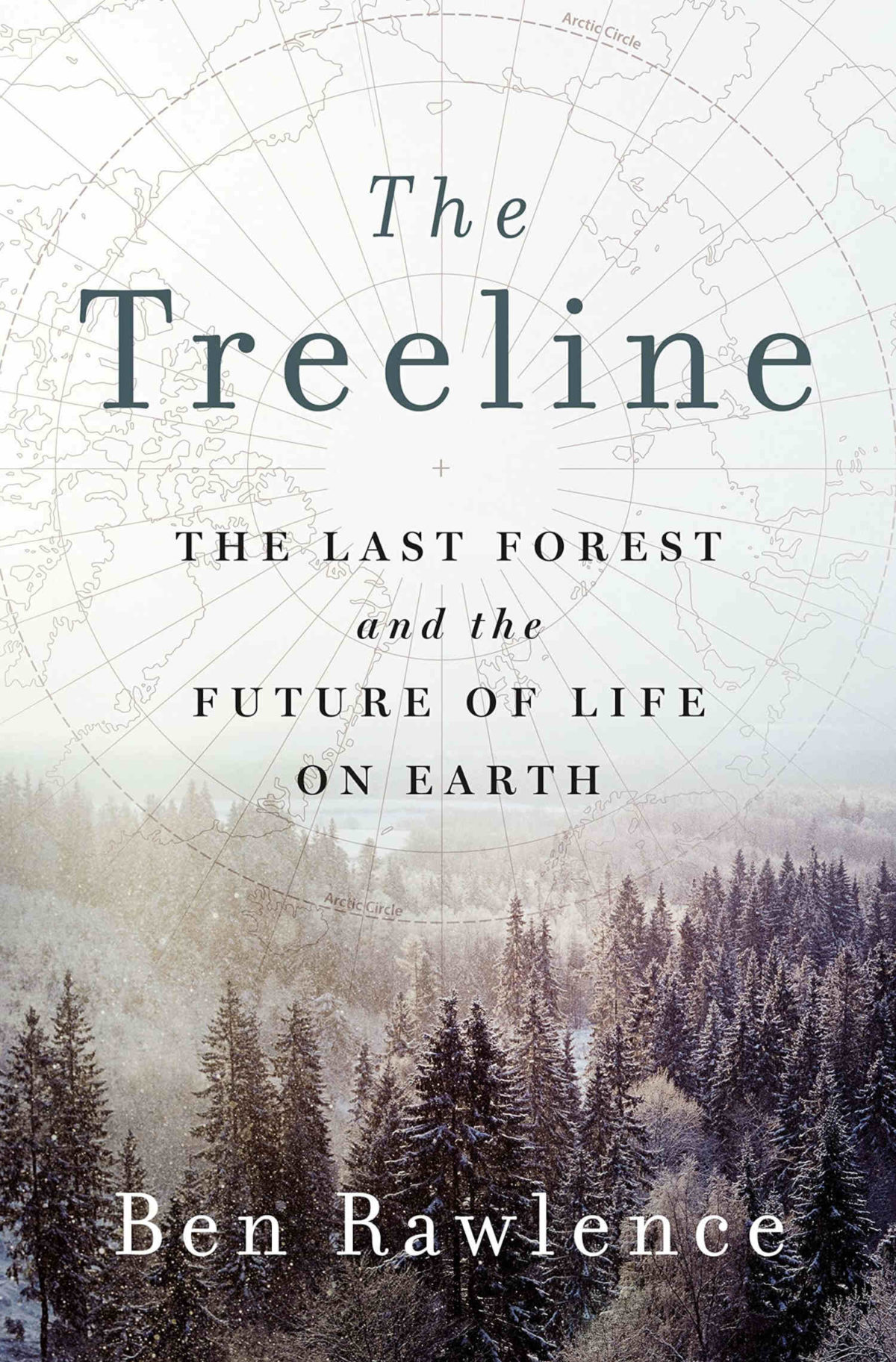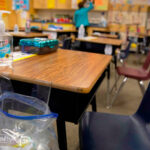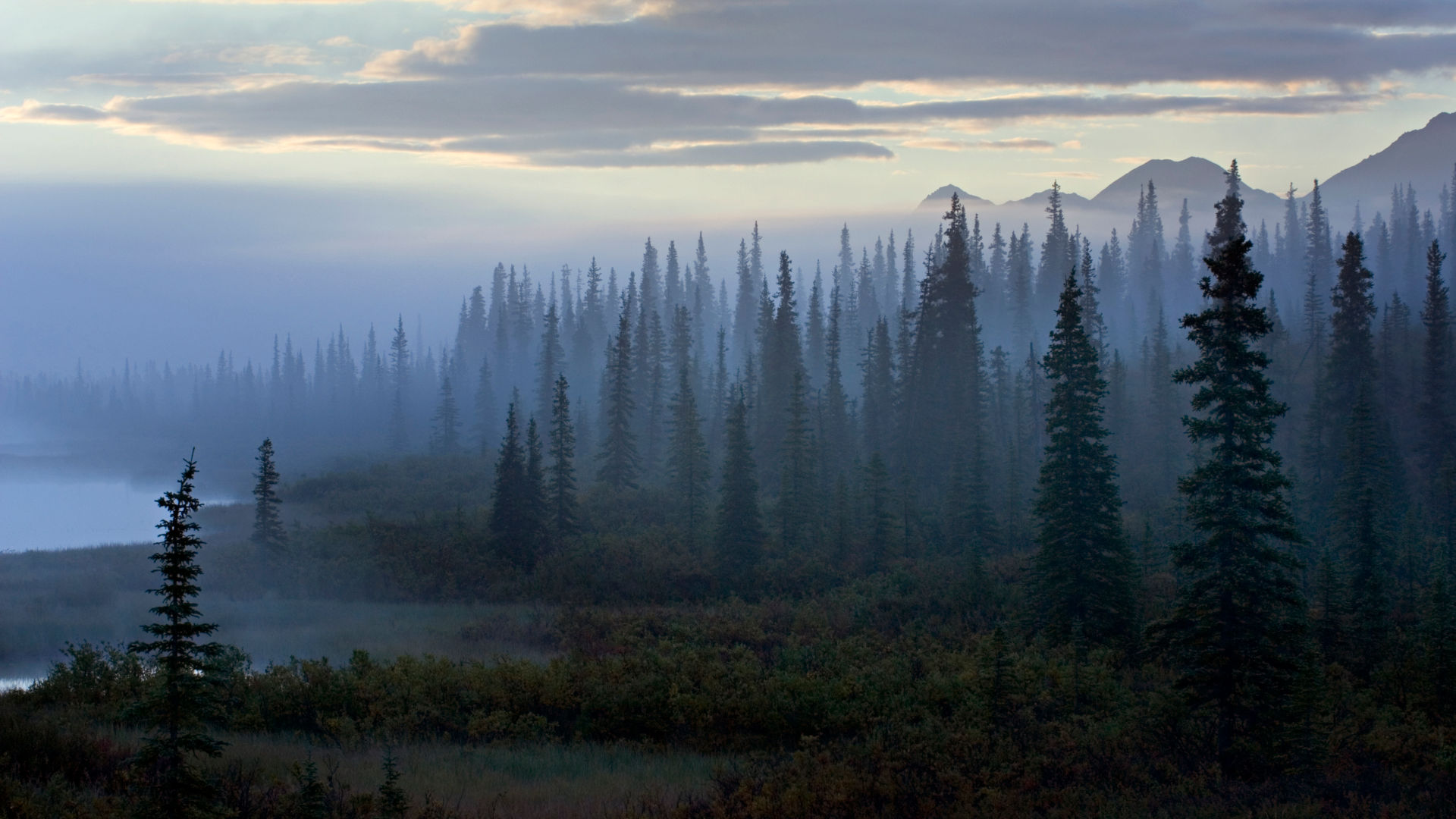Although the speed and severity of climate change are both uncertain, it’s clear by now that warming is inevitable. Rising temperatures will impact every organism on the planet and recast the landscape. In truth, highlights British writer Ben Rawlence, this process is well underway. In “The Treeline: The Last Forest and the Future of Life on Earth,” he devotes his attention to the boreal forest, also known as the taiga, the broad tract of deciduous and coniferous forests covering the far northern expanses of the Earth. Spanning roughly 1.5 billion acres, the boreal contains a staggering one-third of the Earth’s trees. However, as Rawlence writes, “The trees are on the move.”

BOOK REVIEW — “The Treeline: The Last Forest and the Future of Life on Earth” by Ben Rawlence (St. Martin’s Press, 320 pages).
As the melting of permafrost and Arctic sea ice hastens atmospheric warming, the boreal is pushing farther north. The implications of this shift are troubling. While southern regions of the boreal have been marred by deforestation, tundra — the typically cold and treeless landscape ringing the North Pole — has begun transforming into woodland. As the trees propagate in formerly barren northern regions, microbial activity is warming the soil further, thawing frozen earth containing large quantities of greenhouse gas.
At the same time, the boreal’s ability to sequester carbon is declining, as trees especially effective at this crucial task are being replaced by less efficient species. In some areas, trees are struggling to grow and photosynthesize, while in others they are catching on fire and releasing even more planet-warming carbon into the atmosphere. Historically forests regenerate after such burnings, but the frequency of fires and the development of warmer, drier conditions are hindering this process.
The scope of all this environmental change is complex, but Rawlence’s approach to examining it is relatively straightforward. After narrowing down the trees of the boreal to six principal species with unique geographic concentrations — Scotland’s Scots pine, Norway’s downy birch, Russia’s Dahurian larch, Alaska’s spruce, Canada’s balsam poplar, and Greenland’s mountain ash — he sets out to visit various points in the treeline. He starts in his backyard in Wales, then takes the reader east in a vast circle lining the northern rim of the globe. “This is the place to look for a glimpse of what, after the great transformation currently unfolding on Earth, will remain,” he writes.
It would be a misrepresentation to say his book is about trees; rather, they’re the protagonists in a larger story about geology, climate, and the shape of things to come. Humans, of course, play a key role, but Rawlence attempts to steer away from anthropocentrism. (The first person we’re introduced to arrives around 30 pages in.) The book’s many detailed descriptions of the natural world are coupled with contemporary climate science, making the process of learning about the forest’s inner workings both awe-inspiring and ineffably sad.
“Rationally, we know what is happening and what is likely to happen,” he writes of escalating climate change. “But practically and emotionally it seems we will do everything we possibly can to avoid accepting the facts.” It’s a broad statement, but the sentiment is relatable. Who wouldn’t like to believe that things aren’t as bad as they seem?
Rawlence, a former researcher for Human Rights Watch in Africa and co-founder of the environmentally-focused Black Mountains College in Wales, posits that nature itself isn’t the problem, but rather our relationship to it. He points to the decisive turn when humans began treating forests not “as sacred places of wonder, mystery, and sustenance” but instead as a means to build wealth. This enclosure of common land was a prerequisite for colonial rule and industrial capitalism, Rawlence writes, which in turn precipitated our carbon-driven crisis.
He rightfully asserts that the purpose of land is to sustain life; at the most basic level, trees are needed to capture carbon and produce oxygen. Yet the destruction of forests jeopardizes the lives of countless plants, animals, and people. Rawlence, who was born in 1974, notes that more than 40 percent of British wildlife has been annihilated by industrial agriculture and urbanization within his lifetime. In Canada, a large portion of the boreal has been clear-cut, providing the primary source for U.S. toilet paper, according to the environmental nonprofit National Resources Defense Council. As Rawlence writes, “We are actually wiping our behinds with the last remaining trees that stand between life and death for humans on planet Earth.”
But deforestation and declining biodiversity aren’t the only issues in the boreal. In Norway, birch trees are appearing in formerly barren tracts of earth. It’s here that Rawlence visits with Indigenous people of Arctic Europe whose traditional ways of life are vanishing. While reindeer herding has been central to Sámi culture for thousands of years, temperate winters and snowless plains are putting an end to this custom.
Because of the Covid-19 pandemic, one important location Rawlence was unable to visit is Alaska. But given that it’s a well-studied region of the Arctic, he’s able to pull from available research and report from afar. In this section of the boreal, the north is greening while the south turns brown. The black spruce trees that grow there — a highly flammable species exclusively adapted to regenerate after fire — aren’t growing back after they burn, disrupting crucial ecological networks.
Rawlence’s chapter on the Siberian taiga is one of his best. In a particularly harrowing passage, the author travels in a hulking all-terrain vehicle through the frozen expanse of far northern Russia. Crossing the Gulf of Khatanga, he writes, “The moon is lost in the murk, the shoreline is nowhere to be seen, there is only fog, the snow a few feet in front of the truck.” It’s captivating adventure journalism in a site of great environmental consequence. Covering roughly half of Russia’s landmass, the taiga’s heterogeneous treeline speaks to the uncertainty that lies ahead.
“No one has any idea what is going on!” one scientist tells Rawlence. He’s referencing the thawing of frozen earth, which presents several truly frightening climate threats. For all of the greenhouse gases in our atmosphere, twice that amount is stored in permafrost. Worst case scenarios include methane burps capable of rapidly increasing the Earth’s temperature, but even more conservative outlooks indicate we’re already caught in an accelerating chain reaction. The atmosphere has been pumped full of emissions and the permafrost is melting, ensuring the seas will continue to rise and the world will heat up.
There’s a bit of absurdity in Rawlence flying around the world to take notes on its collapse. Like the sightseers in Manitoba hoping to spot polar bears or the hikers in Greenland eager to glimpse the ice before it melts, he’s a spectator of global warming. However, his dispatches send a clear and persistent warning. The dramatic changes occurring in the boreal are part of a global problem, and it’s not a stretch to see the shifting treeline as a harbinger of intercontinental supply chain breakdowns, food and water shortages, and waves of extinction.
The era of predictable seasonal cycles and stable climates is disappearing, Rawlence writes, throwing our natural environment into a state of confusion. A threshold has been crossed, and more disruption will undoubtedly follow. In his estimation, our chances for survival depend on our ability to reconnect with nature. As a starting place, he encourages readers to pay closer attention, both to the environment and their place within it. He gestures at hope — “buying humanity a little more time” — but ultimately views climate change as a force that’s now largely out of our control.
In the end, “The way out of the depression and grief and guilt of the carbon cul-de-sac we have driven down is to contemplate the world without us,” he writes. “To know that the Earth, that life, will continue its evolutionary journey in all its mystery and wonder.”
Andru Okun is a writer living in New Orleans.










